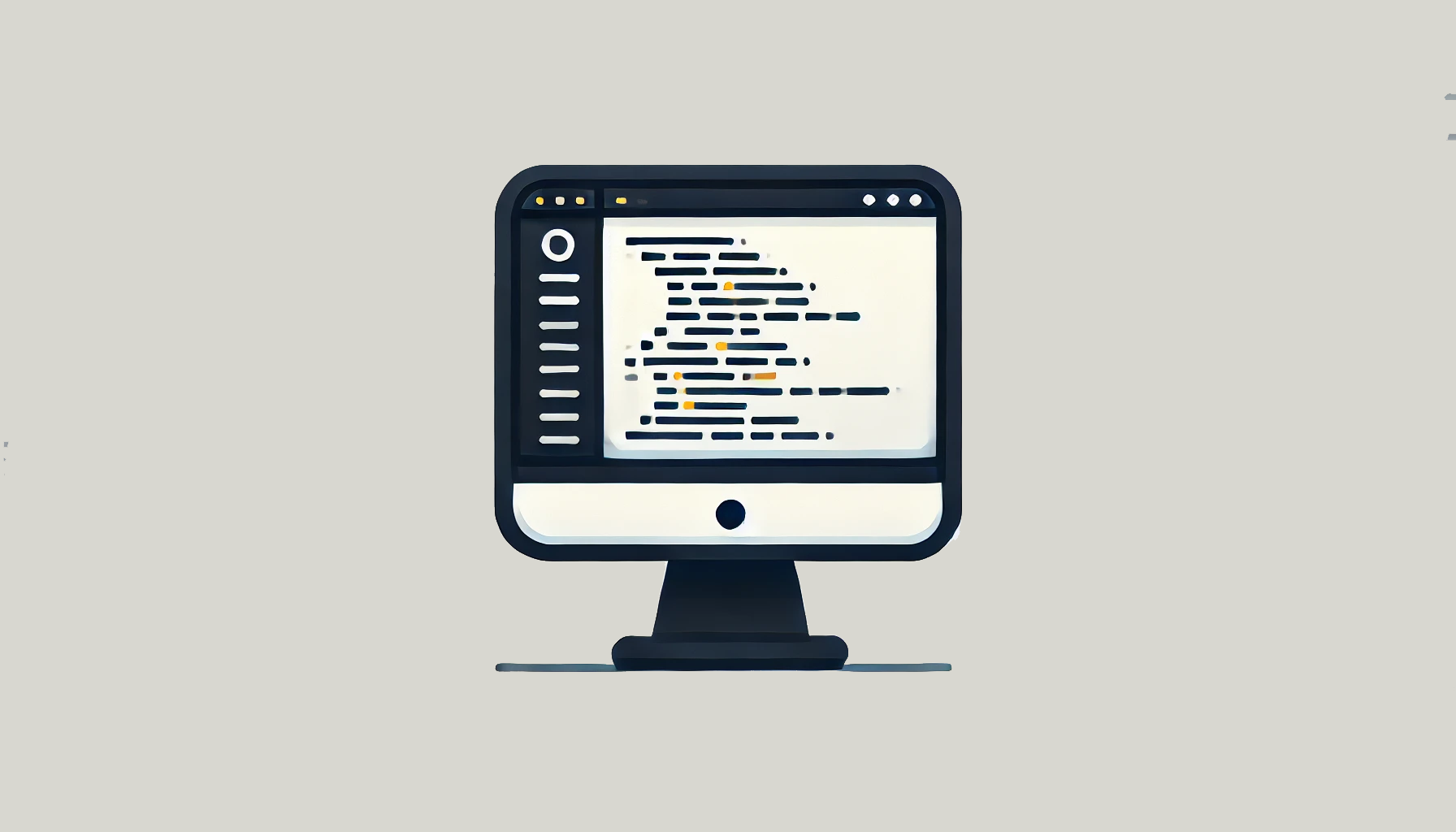Related courses
See All CoursesBeginner
Java Basics
Learn the fundamentals of Java and its key features in this course. By the end, you'll be able to solve simple algorithmic tasks and gain a clear understanding of how basic console Java applications operate.
Beginner
Introduction to Python
Python is a high-level, interpreted, general-purpose programming language. Distinguished from languages such as HTML, CSS, and JavaScript, which are mainly utilized in web development, Python boasts versatility across multiple domains, including software development, data science, and back-end development. This course will guide you through Python's fundamental concepts, equipping you with the skills to create your own functions by the conclusion of the program.
Beginner
C++ Introduction
Start your path to becoming a skilled developer by mastering the foundational principles of programming through C++. Whether you're starting from scratch or already have some coding experience, this course will provide you with the solid foundation needed to become a proficient developer and open the doors to a wide range of career opportunities in software development and engineering. Let's study C++!
Understanding CC and BCC in Email Communication
CC vs BCC in email management

What are CC and BCC?
Definition of CC (Carbon Copy)
CC, or Carbon Copy, is a feature in email communication that allows you to send a copy of the email to additional recipients beyond the primary addressee. When you add recipients to the CC field, their email addresses are visible to all other recipients of the email. This feature is commonly used to keep others informed about the contents of the message without requiring their direct action or response. For instance, if you’re sending a project update to a team member, you might CC your manager to ensure they’re aware of the progress.
In gmail we can specify CC recipients as follows:

Definition of BCC (Blind Carbon Copy)
BCC, or Blind Carbon Copy, enables you to send an email to multiple recipients without revealing their email addresses to each other. Recipients in the BCC field receive the email, but their addresses are hidden from all other recipients, including those in the "To" and "CC" fields. This feature is useful for maintaining privacy and preventing the unintended sharing of email addresses. For example, when sending a newsletter to a large group, using BCC helps protect individual privacy and avoids the exposure of email addresses to others.
In gmail we can specify BCC recipients as follows:

When to Use CC
Appropriate Situations for CC
Using CC is appropriate when you want to keep certain individuals informed about the content of an email without requiring their direct involvement or action. Some common situations where CC is suitable include:
- Project Updates: If you are providing a status update on a project, CCing stakeholders or team members ensures they are aware of the progress without needing to respond or take action;
- Meeting Summaries: After a meeting, you might CC participants who were not present to keep them informed of key discussions and decisions;
- Policy Changes: When communicating changes to company policies or procedures, CC relevant departments or employees to ensure they are aware of the updates.
Benefits of Using CC
The use of CC offers several benefits:
- Transparency: CC allows all recipients to see who else is involved in the communication, fostering transparency and ensuring that everyone who needs to be aware of the information is informed;
- Informed Decision-Making: By keeping relevant parties in the loop, CC helps in making more informed decisions, as stakeholders have access to the same information;
- Documentation: CC provides a clear record of who was informed about specific communications, which can be valuable for accountability and tracking purposes.
By using CC effectively, you can enhance communication within teams and organizations, ensuring that relevant parties are updated and engaged without needing direct responses.
Run Code from Your Browser - No Installation Required

When to Use BCC
Appropriate Situations for BCC
BCC is ideal for scenarios where privacy is a concern or where you need to send an email to a large group of recipients without revealing their email addresses to one another. Appropriate situations for using BCC include:
- Mass Mailings: When sending newsletters, announcements, or invitations to a large list of contacts, BCC ensures that recipients’ email addresses are kept confidential, preventing potential spam and protecting privacy;
- Maintaining Privacy: If you need to forward an email to a group of individuals who do not know each other or should not know each other’s addresses, BCC maintains their privacy by hiding their email addresses from other recipients;
- Avoiding Reply-All Chains: In cases where you want to prevent a situation where all recipients can reply to all other recipients, BCC helps avoid such clutter and keeps the conversation focused.
Benefits of Using BCC
Using BCC offers several benefits:
- Privacy Protection: BCC keeps recipients’ email addresses confidential, protecting their privacy and reducing the risk of their addresses being exposed or misused;
- Reduced Spam Risk: By hiding email addresses, BCC reduces the risk of recipients’ addresses being harvested for spam or unwanted marketing;
- Cleaner Communication: BCC prevents reply-all chains, which can clutter inboxes and cause unnecessary email traffic, leading to more streamlined and effective communication.
By appropriately using BCC, you can safeguard recipient privacy, maintain a professional appearance, and manage large-scale email communications more effectively.
Key Differences Between CC and BCC
To understand the distinctions between CC and BCC, it's helpful to compare them directly. The following table outlines the key differences:
| Aspect | CC | BCC |
|---|---|---|
| Visibility of Recipients | All recipients can see each other's email addresses. | Recipients cannot see the email addresses of others. |
| Privacy Considerations | No privacy; all addresses are visible to everyone. | Maintains privacy; addresses are hidden from other recipients. |
| Impact on Email Etiquette | Good for transparency; everyone knows who else is included. | Good for protecting privacy and avoiding spam; addresses are kept confidential. |
| Use in Mass Emails | Not suitable for large lists due to visibility of all addresses. | Ideal for large lists to keep addresses confidential. |
| Reply-All Chains | Recipients can reply to all, potentially leading to clutter. | Recipients cannot reply to all, avoiding unnecessary replies. |
Common Scenarios for Using CC and BCC
| Scenario | CC Example | BCC Example |
|---|---|---|
| Business Communication | When sending out a quarterly financial report, the finance team CCs the department heads to ensure they are all kept informed about the financial status of their respective teams. | When sending a promotional email to a large list of subscribers, the marketing team uses BCC to ensure that individual email addresses are kept private and not exposed to the entire list. |
| Personal Email | When organizing a family reunion, you might CC family members who are helping with the planning to ensure they’re all up to date on the latest arrangements. | When inviting friends to a surprise party, you use BCC to keep the guest list private and prevent recipients from seeing each other's email addresses. |
Start Learning Coding today and boost your Career Potential

Best Practices for Using CC and BCC
How to Use CC Effectively
Using CC can be highly effective when you need to keep multiple recipients informed about a particular email. Here are some best practices for using CC:
-
Relevant Information: Use CC to include individuals who need to be kept in the loop but are not directly involved in the conversation. For example, CCing your supervisor on a project update can ensure they are aware of progress without needing to respond;
-
Limit the Recipients: Avoid overusing CC. Include only those who genuinely need to be informed. Overloading recipients with information can lead to unnecessary clutter and decrease the effectiveness of communication;
-
Use Clear Subject Lines: Make sure your subject line reflects that there are additional recipients. For example, adding "[CC]" to the subject line can indicate that there are others copied on the email;
-
Reference Recipients When Necessary: If your message includes information that is specifically relevant to someone CC’d, mention them in the body of the email. This can ensure they notice the information that pertains to them;
-
Maintain Professionalism: Ensure that the content of the email is appropriate for all CC’d recipients. Avoid sharing sensitive information unless necessary and relevant to everyone copied.
How to Use BCC Effectively
BCC is useful for maintaining privacy and managing large email lists. Follow these practices for effective BCC usage:
-
Protect Privacy: Use BCC when sending an email to a large group to protect recipients' email addresses. This prevents others from seeing who else is included in the email;
-
Avoid Spam: BCC helps avoid the appearance of spam by keeping the recipient list confidential. This can improve the likelihood that your email is read rather than discarded as spam;
-
Use for Mass Communication: For newsletters, promotional emails, or any mass communication, BCC is an ideal choice to ensure privacy and manage the recipient list effectively;
-
Maintain a Clean Email List: Regularly update and clean your email lists to ensure that your BCC recipients are relevant and the list is not outdated;
-
Mention BCC Recipients Wisely: If necessary, refer to the fact that there are BCC’d recipients in the email body to acknowledge that there are others privy to the information without revealing their identities.
Avoiding Common Mistakes
-
Don’t Overuse CC and BCC: Using these features excessively can clutter inboxes and lead to miscommunication. Use CC and BCC judiciously to ensure clear and effective communication;
-
Avoid Confidential Information in CC: Never include sensitive or confidential information when using CC unless all recipients are authorized to view it;
-
Be Cautious with BCC: Avoid using BCC to secretly include recipients in email threads where their awareness might be necessary for context or action. Misusing BCC can lead to misunderstandings;
-
Follow Up with Key Recipients: If you are using BCC to manage large groups, follow up with key individuals to ensure they received and understood the information, especially if their action is required;
-
Review Before Sending: Always double-check your recipient list and email content before sending. Ensure that CC and BCC fields are used appropriately and that no sensitive information is included inappropriately.
For more detailed guidelines on email best practices, you might find the following resource useful: Blind carbon copy
Conclusion
Summary of Key Points
Understanding how to use CC and BCC is essential for maintaining professionalism and privacy in email communication. CC is useful when recipients need to be aware of who else is included in the conversation, while BCC is ideal for keeping recipient information confidential, especially in larger groups. Using these options appropriately helps improve communication efficiency, prevent email clutter, and protect recipient privacy.
To further optimize your email communication, consider using an email management system like Mailbird.
Mailbird can help you organize your inbox, manage contacts, and streamline communication, ensuring efficient and secure email management. This tool is crucial for maintaining order and reducing the risk of errors in your email correspondence.
Final Thoughts on Email Communication
Effective email communication involves more than just understanding CC and BCC; it also requires careful consideration of privacy and clarity. Using CC and BCC thoughtfully can help you manage your communications effectively and uphold professional standards. By practicing good email etiquette, you can foster trust and respect in all your professional interactions, making sure every message is clear, respectful, and purposeful.
FAQs
Q: What is the main purpose of using CC in emails?
A: The main purpose of using CC (Carbon Copy) in emails is to keep additional recipients informed about the content of the email without requiring a direct response from them. It's useful when you want to ensure that certain people are aware of a conversation or decision but are not directly involved in the discussion.
Q: Can I use both CC and BCC in the same email?
A: Yes, you can use both CC (Carbon Copy) and BCC (Blind Carbon Copy) in the same email. CC is used when you want to keep recipients informed and visible to each other, while BCC is used to keep recipients hidden from one another. Combining both allows you to include some recipients in a visible list and others in a hidden list.
Q: What are the risks of using BCC?
A: The primary risk of using BCC (Blind Carbon Copy) is that it can lead to a lack of transparency. Recipients may not realize who else is included in the email, which can cause confusion or mistrust if they later learn that others were copied without their knowledge. Additionally, overusing BCC may lead to accidental leaks of confidential information if a recipient replies to all, thinking they are replying only to the sender.
Q: How can I ensure my email etiquette is appropriate when using CC and BCC?
A: To ensure proper email etiquette when using CC and BCC, always consider the relevance of including each recipient. Use CC to keep relevant parties informed without requiring action, and use BCC to protect privacy when emailing large groups. Avoid overusing these features, as it can lead to unnecessary clutter or privacy concerns. Ensure your intentions for including recipients are clear to avoid misunderstandings.
Q: Are there any legal considerations when using CC and BCC?
A: Yes, there are legal considerations when using CC and BCC in emails. Misusing CC and BCC can lead to breaches of privacy laws, especially when handling sensitive information or personal data. Ensure compliance with data protection regulations such as GDPR or CCPA by carefully managing how recipients' email addresses are shared. Always use these tools with caution to avoid legal risks associated with improper disclosure of information.
Related courses
See All CoursesBeginner
Java Basics
Learn the fundamentals of Java and its key features in this course. By the end, you'll be able to solve simple algorithmic tasks and gain a clear understanding of how basic console Java applications operate.
Beginner
Introduction to Python
Python is a high-level, interpreted, general-purpose programming language. Distinguished from languages such as HTML, CSS, and JavaScript, which are mainly utilized in web development, Python boasts versatility across multiple domains, including software development, data science, and back-end development. This course will guide you through Python's fundamental concepts, equipping you with the skills to create your own functions by the conclusion of the program.
Beginner
C++ Introduction
Start your path to becoming a skilled developer by mastering the foundational principles of programming through C++. Whether you're starting from scratch or already have some coding experience, this course will provide you with the solid foundation needed to become a proficient developer and open the doors to a wide range of career opportunities in software development and engineering. Let's study C++!
The SOLID Principles in Software Development
The SOLID Principles Overview
by Anastasiia Tsurkan
Backend Developer
Nov, 2023・8 min read

Top 25 C# Interview Questions and Answers
Master the Essentials and Ace Your C# Interview
by Ihor Gudzyk
C++ Developer
Nov, 2024・17 min read

30 Python Project Ideas for Beginners
Python Project Ideas
by Anastasiia Tsurkan
Backend Developer
Sep, 2024・14 min read

Content of this article